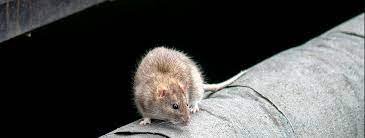Introduction: Fabric pests can wreak havoc on our favourite clothes, linens, and upholstery, causing damage that can be both frustrating and costly to repair. In this comprehensive guide, we will delve into the world of fabric pests, including types, signs of infestation, prevention methods, and effective treatment options. By understanding these nuisances, you'll be equipped with the knowledge to safeguard your wardrobe and home.
Types of Fabric Pests: Fabric pests encompass a variety of insects that feed on natural fibers found in clothing and other fabric materials. The most common fabric pests include:
- Clothes Moths: These small moths lay their eggs on natural fibers like wool, fur, silk, and feathers. The larvae hatch and feed on these materials, causing irreparable damage.
- Carpet Beetles: These insects feed on a wide range of fabrics, including carpets, clothing, upholstery, and curtains. They can also cause damage to natural fibers like wool and silk.
Signs of Fabric Pest Infestation: Detecting fabric pest infestations early is crucial for minimising damage. Look out for these signs:
- Visible Damage: Small holes, chewed fabric, and irregular patterns of destruction on clothes or fabrics indicate fabric pest activity.
- Larvae or Insects: Spotting larvae or adult insects around your clothing or fabric items is a clear indication of an infestation.
Preventing Fabric Pest Infestations: Prevention is key when it comes to fabric pests. Follow these preventive measures:
- Regular Cleaning: Clean clothes before storing them for extended periods, as fabric pests are attracted to sweat, food stains, and body oils.
- Proper Storage: Store clothing and fabrics in sealed, airtight containers or bags to prevent pests from accessing them. Consider using mothballs or cedar blocks as deterrents.
Effective Treatment Options: If you discover a fabric pest infestation, take prompt action with these treatment methods:
- Freezing: Place infested items in a freezer for a few days to kill fabric pests and their eggs.
- Heat Treatment: Use a clothes dryer or iron on high heat to eliminate fabric pests.
- Vacuuming: Regularly vacuum carpets, upholstery, and curtains to remove fabric pests and their larvae.
Professional Pest Control: In severe infestations, it is advisable to seek assistance from professional pest control services, who have the expertise and products to eliminate fabric pests effectively.
Conclusion:
Fabric pests can cause considerable damage to our favourite clothing and fabric items. By staying vigilant, implementing preventive measures, and promptly addressing infestations, you can protect your wardrobe and home from the destructive effects of fabric pests. Remember, early detection and timely action are key to maintaining the integrity of your fabrics and preserving their longevity.
Follow Us More On Social Media: Facebook, Pinterest, Twitter, YouTube

